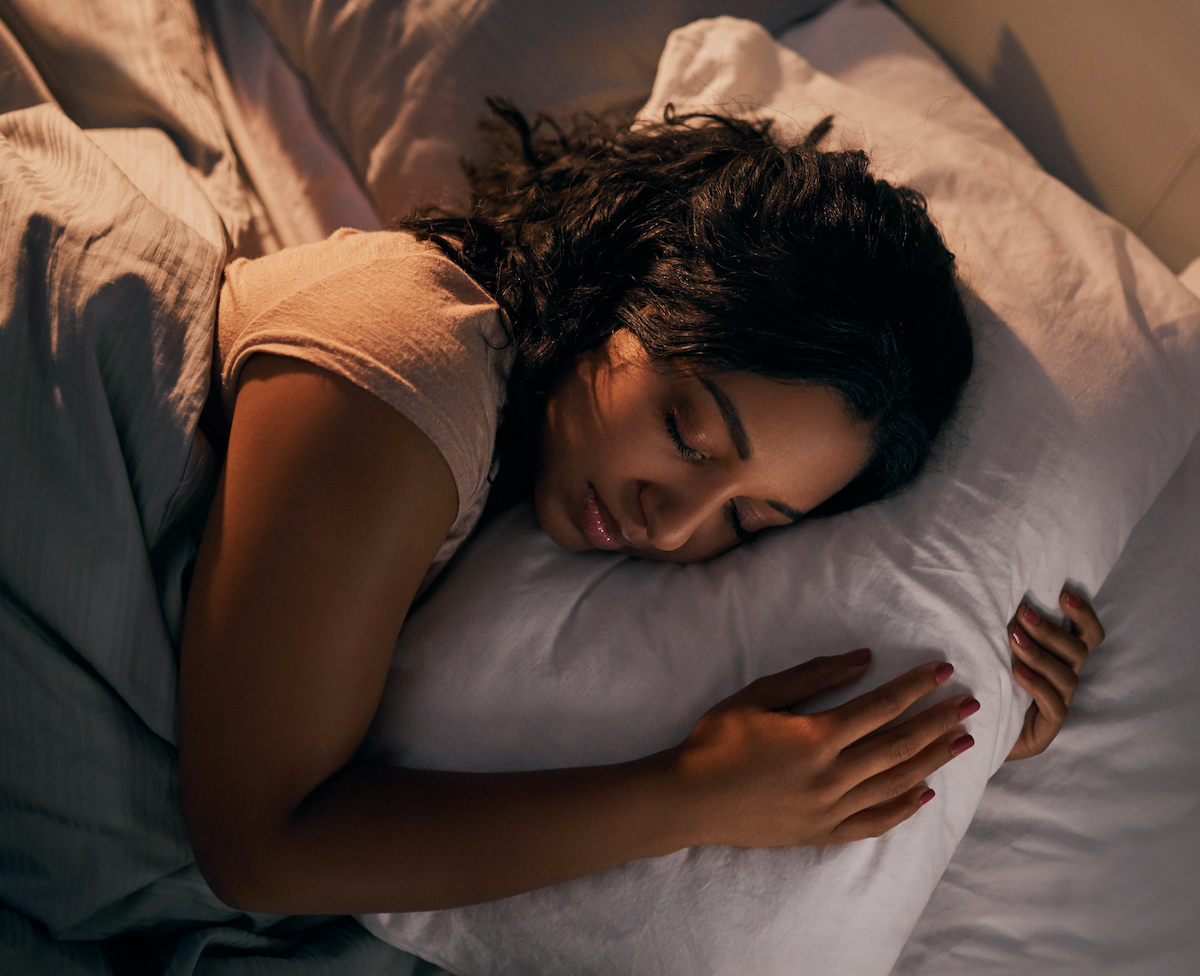Looking for simple progressive muscle relaxation instructions to help you fall asleep more easily?
Progressive muscle relaxation keeps coming up as a great strategy to help you sleep better and relax in general. The problem is, you don’t know how to do it.
But don’t worry, Progressive Muscle Relaxation, also known as PMR, isn’t hard to do. In just a few steps, you can fall asleep easier and see why this technique comes so highly recommended by both sleep specialists and formerly poor sleep sufferers alike.
Read on to learn why it works and to get some clear Progressive Muscle Relaxation instructions.
What Is Progressive Muscle Relaxation?

Falling asleep in our modern, fast-paced world can be really challenging. Tension seems to be an inevitable part of life.
Progressive Muscle Relaxation is a relaxation technique that helps many people fall asleep and get better sleep quality.
It’s a combination of cleansing breaths and muscle tension followed by muscle relaxation. And like the popular relaxation techniques of yoga and massage, PMR is totally natural.
It’s a simple process that anyone can do and you don’t need any special equipment.
How Does Progressive Muscle Relaxation Help?
Essentially, Progressive Muscle Relaxation is a technique used to reduce everyday stress and anxiety which in turn, can help you fall asleep more easily.
One of the effects of stress is poor sleep, so stress management techniques like PMR can be really helpful.
If stress isn’t managed properly, it’s well known that it can lead to blood pressure issues, anxiety disorders, depressive disorder, chronic pain, and general feelings of tension — all of which can disrupt your sleep.
You don’t have to be a health professional to understand the benefits of stress reduction in your daily life.
According to studies, regular use of PMR reduced symptoms of depression, anxiety, and stress. At the same time, it improved feelings of well-being and quality of life. The mental health benefits of relaxation affect your whole life, not only sleep.
Doctors and sleep specialists are fans of the Progressive Muscle Relaxation technique because it has the ability to relieve tension and anxiety. The feeling of relaxation that you will experience helps to ease you off to sleep.
Progressive Muscle Relaxation Instructions: How to Do It

Now that you know about the health benefits of PMR, let’s get to the step-by-step instructions.
To set yourself up for success, do this method as part of your nighttime routine. Do it just before bed to help you fall asleep. Make sure you find a quiet spot, background music is not necessary. Skip the tight clothing, and opt instead for something more free-flowing.
Choose a place to do this where you can lay comfortably on your back, the floor is fine, or you can do it in your bed.
There are audiotaped instructions that can guide you, or you can learn the muscle groups and guide yourself.
First, learn the muscle groups and how to tense them:
- Hands – Clench them
- Wrists and forearms – Extend them, and bend your hands back at the wrist
- Biceps and upper arms – Clench your hands into fists, bend your arms at the elbows, and flex your biceps
- Shoulders – Shrug them (raise toward your ears)
- Forehead – Wrinkle it into a deep frown
- Around the eyes and bridge of the nose – Close your eyes as tightly as you can
- Cheeks and jaws – Smile as widely as you can
- Around the mouth – Press your lips together tightly (focus only on your lips, not your face)
- Back of the neck – Press the back of your head against the floor or chair
- Front of the neck – Touch your chin to your chest without creating tension in your neck and head
- Chest – Take a deep breath, and hold it for 4 to 10 seconds
- Back – Arch your back up and away from the floor or bed
- Stomach/abdominal muscles – Suck it into a tight knot
- Hips and buttocks – Press your buttocks together tightly
- Thighs – Clench them hard
- Lower legs – Point your toes toward your face. Then point your toes away, and curl them downward at the same time.
Once you know the major muscle groups, you can begin the Progressive Muscle Relaxation technique.
- Breathe in and tense the first muscle group for about 4-10 seconds. Be careful not to tense the muscles to the point of pain or cramping. You should not feel body pains.
- Breathe out and suddenly relax the first muscle group. Do not relax gradually, release all the muscle tension at once. You should not feel discomfort during relaxation.
- Relax for 10-20 seconds before moving to group 2. During the break, notice the difference in how the first group feels now.
- Repeat the same process for muscle group 2 through the end.
- When you finish with all the groups, count backward from 5 to 1 and bring your focus back to the present. Do a moment of body scan meditation and feel the difference in relaxation in your entire body.
Give this relaxation practice a try tonight. But, remember, like any practice, it may not work immediately, so keep trying and develop some bodily awareness along the way to a better night’s sleep.
Does Progressive Muscle Relaxation Really Work?

Yes! And science agrees. A study on 80 people showed a significant decrease in anxiety and an improvement in sleep quality among those who practiced PMR.
What’s more, specific studies have focused on the relationship between sleep and PMR and showed a direct link between PMR and improved sleep quality.
Not to mention all the anecdotal evidence, which may be what got you searching, to begin with.
In Conclusion…
There you have it, some simple progressive muscle relaxation instructions!
There are plenty of relaxation techniques to sleep – professional massage, yoga therapy, acupuncture treatment, and music therapy are among the most common, right alongside progressive muscle relaxation.
The efficacy of relaxation as it relates to falling asleep is quite clear. Put the brakes on stress with this technique and enjoy a better night’s sleep and a better quality of life.

Welcome to Snoozerville! I’m Dr. Alex Hartley, your guide to the world of restful sleep. With a Ph.D. in Sleep Science and years of experience as a sleep therapist, I’ve dedicated my life to understanding and improving sleep quality. My passion lies in uncovering the mysteries of sleep and sharing practical, science-backed advice to help you achieve the best rest possible. Beyond my academic pursuits, I’m an advocate for mindfulness and relaxation techniques, which I incorporate into my daily routine. At Snoozerville, I aim to transform your nights, combining the latest research with easy-to-implement tips. Whether you’re a chronic insomniac or just looking to improve your sleep hygiene, join me on this journey towards peaceful, rejuvenating sleep.

